The Waste Land
…the grass was singing…
Ganga was sunken, and the limp leaves
Waited for rain, while the black clouds
Gathered far distant, over Himavant.
The jungle crouched, humped in silence.
Then spoke the thunder
T.S. Eliot, The Waste Land
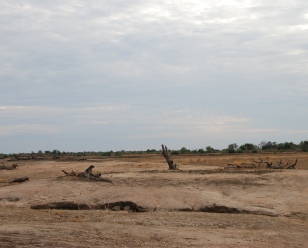
‘Due to turbulence, there may be a few bumps as we descend into Mfuwe. We expect to land in about 15 minutes. The time now is 6.00 pm and the temperature in Mfuwe is 38 degrees or one hundred for those of you who prefer fahrenheit.” The pilot’s voice crackled over the intercom. I was returning to the Luangwa Valley on an October evening.
Since then it has become hotter, going into the 40s day after day, the sky cloudless and the heat hanging in the still air. The setting sun drops rapidly, a firry red ball sending out flames into the dust-laden air, but even with the sun gone all that it has touched remains hot and dry.
Only in the early hours of the morning does the temperature drop, but the respite is short and soon the sky turns red in the east and the warm-up for another day begins.

The hot season here is not long – a month and a half perhaps – but it comes at the end of the long dry season as the last rain of any consequence fell in April. It is a hard time for the wildlife of Luangwa as both food and water are short.
For the grazers and browsers it is a full time occupation to find enough food. The hippos leave the river at sunset and travel far throughout the night to find sufficient food. The large pods of the sausage tree, brought down either by their own weight or by elephants, are a welcome addition to both hippos and giraffe when their usual diet
is difficult to find. Elephants are destructive eaters at this time of sparse food. They stand on hind legs and reach their trunks high, using their weight and strength to pull down branches. Large open sores appear on the trunks of baobab and mopane trees where the elephants have torn the bark with their tusks to get much needed extra nutrients. Walking great distances to find enough food and water, the animals become thin and lethargic. It is common to see elephants lying in the shade of a welcome tree or spaying themselves with muddy water to cool their hot skin.
It is the predators who eat well in the dry months. Impala and puku are forced onto the open plains to find food and it is here that the hunters – lions, leopard and wild dogs – seek them out. A buffalo may also become a hearty meal for a family of lions, giving the young cubs an opportunity to tear at the fresh meat. At the very end of the dry season the impala drop their young. An unaware and unsteady fawn makes a tasty supper for a leopard. It is easy for the cat to quickly haul the light carcass into a tree to escape the hyenas who are always ready to steal another animal’s kill.
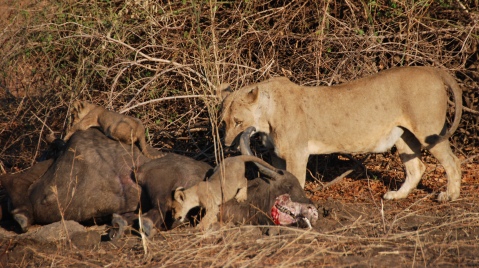
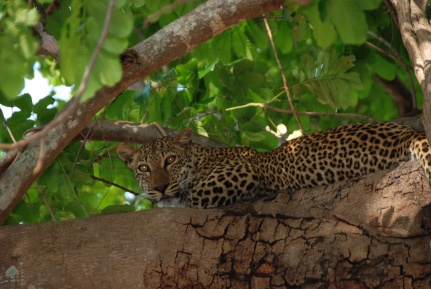

The ground is bare, with deep cracks in the hardened mud. The footprints of the last animals to walk through when the ground was soft stay frozen until the next rainy season. Most of the trees are bare and the leaves of the winter thorn, which has remained bright green through the dry season, now turn grey and fall. However some trees do not need to wait for rain to produce new foliage. Their roots are deep and their limbs carry enough energy to grow bright new green leaves. The spreading canopy of the sausage tree gives welcome shade to many animals and the deep red flowers are a favoured food for impala and baboons. The tall mopane trees produce new leaves that shimmer in the hot air, but the mopane scrub, stunted by brutal elephant treatment, has to wait until the earth is damp to lose their deathlike appearance.
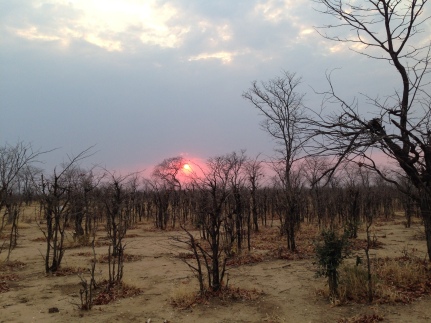
Fierce hot winds whip up the sand on the dry riverbed and fast moving kamvuluvulu (whirl winds) take leaves and dust high into the air. As the heat rises the cicadas start their high-pitched single-note orchestration, sounding like an endless whistling kettle, slightly off key (is that what T S Eliot meant by the line in the Waste Land, ‘the grass is singing‘?). Afternoon clouds build up in the harsh blue November skies. Low rolls of thunder tell that there is rain around but it falls in isolated showers, most of which barely wet the dry earth, just enough to cool the air and bring a brief respite from the intense heat.
The people living in the Luangwa valley, like the animals, struggle through the hot dry days. The heat saps energy making everything an effort. In spite of this it is still very much the tourist season as the animals are concentrated around the river and the few remaining lagoons, while the barren landscape makes the animals easy to spot. The Zambians cope better at working in the heat than the majority of soft Westerners, although many of their houses do not have the luxury of electricity or fans.
The school building where I work is relatively cool as it gets no direct sun, has windows on both sides to allow air through, and the tin roof is covered with thatch. It is fortunate that the building is cool as outside it is very different. The metal slide is too hot to use at all and the swings bearable only early in the morning. The children stay outside only till 8.00 am and even then huddle on the sandpit where there is shade from the grass fence. The mornings are long in the classroom so most days we fill a bowl with water and have water play on the shaded verandah.
My house gets a lot of sun and by the end of the day the walls are warm and everything in the house is as well. Two fans whirl day and night but only move the hot air around. As I sit in the afternoon with sweat running down my back I remember Mary, the character in Doris Lessing’s novel “The Grass is Singing”, who sat in the house her husband Dick had built on his farm. As the sun beats down relentlessly onto the tin roof Mary loses her sanity, her marriage and, finally, her life. To sleep at night I wet a chitenje (a piece of light cotton fabric) and place it over me. This cools the body by something I remember from school science is called ‘latent heat of vaporization’. Most nights I will wake soon after midnight and wet the chitenje once more.
This is a teasing time, a time of impatient waiting for the rain, the real rain that will fill the river, turn the barren wasteland into lush emerald-green pasture and bring a smile to the farmers who will then plant their crops.
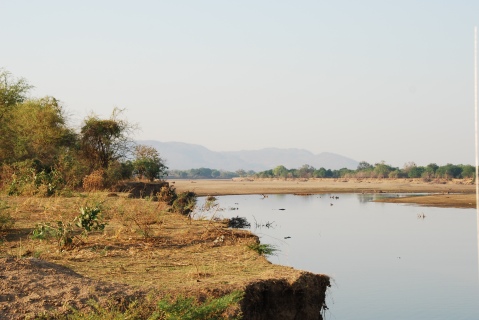
A Doll’s House
Before coming to Kapani I was told that a furnished and equipped house would be ready for me. There was no photo but there was a list of what would be provided. I noticed that although tea towels were on the list, an iron or sweeping brush was not. When a queried this I was told that the house would be cleaned and my laundry done. With this sort of service it seemed churlish to ask for a photo of the house. It would just have to be a surprise.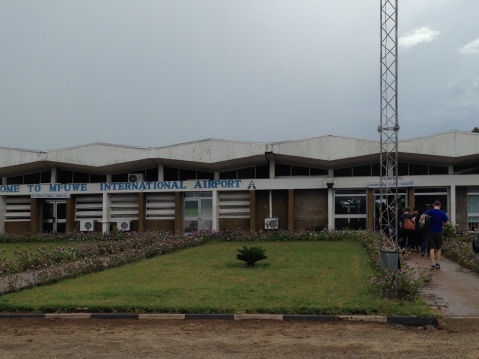
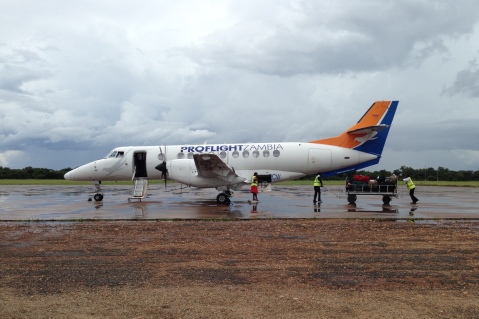 On arrival at Mfuwe (International) Airport, I was met by Aubrey and within minutes he had my bags stowed in the back of the open safari vehicle. The airport building serves as the only bank in the area and there are two cash machines so I quickly got some money and we set off on the 30 km journey to Kapani. I had travelled this road many times, from when it was a rough dusty track, while it was being upgraded and we would have to dodge round road making machines or churn through slippery mud. Now it is a tarred road and the journey time has halved. This means that the growing number of vehicles travels faster, and the numerous cyclists and pedestrians have to keep to the extreme edge.
On arrival at Mfuwe (International) Airport, I was met by Aubrey and within minutes he had my bags stowed in the back of the open safari vehicle. The airport building serves as the only bank in the area and there are two cash machines so I quickly got some money and we set off on the 30 km journey to Kapani. I had travelled this road many times, from when it was a rough dusty track, while it was being upgraded and we would have to dodge round road making machines or churn through slippery mud. Now it is a tarred road and the journey time has halved. This means that the growing number of vehicles travels faster, and the numerous cyclists and pedestrians have to keep to the extreme edge.
The safari lodges usually transport their guests to and from the airport in open vehicles. This makes what would otherwise just be an interesting journey into an adventure. I donned sunglasses to keep the wind, dust and insects out of my eyes but the black clouds above us meant that soon they were more effective as goggles. Aubrey stopped the vehicle and pulled out large plastic sheets to cover my suitcases and we continued on our way with rain blowing into our faces.
I was full of anticipation as the vehicle turned into Kapani. We passed the workshop, turned sharp right along a narrow track and came to a halt. There was my house. It was a child’s drawing of a house – simple, symmetrical and inviting – a door, two windows each side and a small ‘stoop’ or porch with two comfortable chairs and a table.
 The manager, his wife and two girls were there to greet me (Aubrey had called on the radio as we had turned onto the Kapani road) and to usher me in. A great deal of hard work had gone into getting the house ready. It was complete, even to having a fresh clean tea towel hanging from a nail; tea, coffee and other essentials-to-life were on the shelf. Fresh paint covered the walls and there was a soft floral smell- lavender floor polish I discovered later. “Did I want lunch?” “No, I was fine.” They would leave me to unpack and return to show me around and in the evening they would collect me for supper. I felt welcome.
The manager, his wife and two girls were there to greet me (Aubrey had called on the radio as we had turned onto the Kapani road) and to usher me in. A great deal of hard work had gone into getting the house ready. It was complete, even to having a fresh clean tea towel hanging from a nail; tea, coffee and other essentials-to-life were on the shelf. Fresh paint covered the walls and there was a soft floral smell- lavender floor polish I discovered later. “Did I want lunch?” “No, I was fine.” They would leave me to unpack and return to show me around and in the evening they would collect me for supper. I felt welcome.
Exploring the house didn’t take long. The inside dividing walls came to just above the doors and there was no ceiling, just rafters and a roof of corrugated tin inside, and thatch outside. The windows, with no glass but netting (against animals) and mesh (against insects) with diaphanous white curtains, made the house light and airy.
My 70kg of luggage had followed me in (I had sent two cases up by road) so I set about unpacking. This did not take long. I made heaps of my clothes (always too many) and piled them in the open wood and bamboo wardrobe. There was room for a chair in the corner of the room and here I put items to be hung up – where they stayed for the next month till I borrowed a few coat hangers. The bed was made up and I gave it a quick test – very comfortable. Large elephants walked around the bedspread passing under a giant sausage tree with spreading branches.
Before I came, I had been asked what would be one thing I would really like to have. A good mosquito net was my reply. My request had been remembered: meters of crisp white mosquito netting almost filled the room making an impenetrable barrier against the insect invasion I would encounter.
The other room (apart from the bathroom) was the living area. The furniture was new, made from a local Mukwa (Pterocarpus angolensis) – a heavy reddish-brown hardwood, by the Kapani carpenter. The couch had covers and cushions from Tribal Textile, a local company specializing in hand printed fabrics.
I decorated the square table with a piece Indonesian cloth, found a few nails and put up some Vietnamese wall hangings, made a bookshelf where the table met the wall, unpacked my electronic gadgets (old and new laptops, Kindle, iPad and iPhone) and found a spot to hide the suitcases. On another chair, placed by the only door, I piled bits and pieces I had collected as being useful for the school and unobtainable where I was – a bag a brightly coloured ribbon, cream of tartar and bottles of food colouring (for making play dough), a hot glue gun, pots of glitter and smiley-face stickers.
The kitchen area was simple but adequate, especially for a person who cooks from necessity and not for pleasure. A sink, a cooker, a fridge, crockery, cutlery and wine glasses were all there. Cooking utensils were spartan but I didn’t plan on doing cordon bleu meals.
The house was soon ‘home’. Sitting in a comfortable wooden chair on the stoop drinking tea confirmed that it would be a good place to live.
*****
That was three months ago but it has proved to be true. Every time I come through the door from the stoop the little house welcomes me. I eat lunch with the Kapani staff so only cook for myself in the evening. I have not tried the oven yet, as the trays provided are too big to fit, but I have perfected a tomato sauce which is good with pasta, chicken or a piece of fish and I have remembered how to roast and salt peanuts.
Having been here for a while there are things I would like to change. My doll’s house has no view. True, it does have a fine wild mango tree with fruit loved by the elephants, but what I look at is a car park. The workshop is nearby and the high-pitched whine of the electric saw fills the daylight hours. If it stops the only slightly less deafening sound of the power hose used for cleaning the safari vehicles takes over.
In Asia I was spoilt by cheap, reliable and fast internet and came to depend on it as a replacement for a dictionary and reference books. Here internet is expensive, unreliable and slow. I bought a costly router, many kwacha worth of ‘talk time’, which I then converted into ‘bundles’, to purchase a few GB. What I thought would last 60 days was finished in 10, so now I am more cautious about watching video clips and moving photos by airdrop. I love listening to BBC radio and fortunately my son showed me how to change the setting so that I did not gobble up bytes by having opera quality sound just to listen to the news.
As the sun goes down the workshop tools stop, the cars move out and the baboons and monkeys take to the trees. An intense quiet descends. During the night this will be broken by the call of a hyena or a lion, the snapping of branches as the elephants have a late night snack outside my bedroom window, and the mournful cry of owls. The clear winter sky allows bright starlight to shine through my bedroom curtains – these are luxuries to be enjoyed and appreciated.
The Small Dominate
All of The Big Five are found within the Luangwa parks.
I am living is across the river from the national park but the river is just low enough for elephants to come across seeking the favored butterfly-shaped Mopane leaves with a side salad of recently watered turf. A few nights ago I awoke at 3 am to the sound of leaves rustling. My immediate thought was that it was my turn to be broken into by the thieves who are plaguing the area removing electronics and cash. I turned on the light thinking that would deter them but the sound continued. I lay and listened and realized that the heavy rhythmic breathing was not human but animal. A large elephant was on the other side of the gauze-and-chicken-wire window, pulling leaves off a shrub. He sounded chesty and there was only one so I assume he was a lone and lonely old man. He stayed for a long time and eventually his rasping breath lulled me back to sleep. Groups of elephants regularly come through the housing area so care has to be taken when walking around, especially at night. These huge creatures move silently.
One very early morning the baboons were making an almighty din, a sure sign a leopard was present. The throaty roar of lions is often a night-time sound and at dawn this morning three lionesses strolled across the area below the deck.
On my first night I ate dinner with friends while the most enormous hippopotamus munched his monotonous vegetarian meal of fine lawn grass a couple of meters away.
There are plenty of opportunities to see the ‘lesser’ animals. Driving home one evening, one of The Small Five, the Elephant Shrew, sped across the road, its large ears making it instantly recognizable. On the same road we saw a genet and a banded mongoose. A family of stately giraffe often browses contentedly near the roadside, and bush buck are brave enough to feed on the grass around the swimming pool while people are swimming. The noisy hyenas are around at night and a chorus of birdcalls starts before dawn. Baboons, nearly as big as me but far more threatening, are always lurking around hoping for something to steal. Their competitors are the less aggressive but secretive and more nimble monkeys.
It’s the animals that tourist come to see, but it is the very smallest of creatures, the ones that are not on the ‘must see’ lists, that make their presence felt with threatening intent and keep me constantly alert.
The Kalahari Ferrari, a creature that is neither a spider nor a scorpion, is aptly named. They dislike light so favour dark shadowy places and race across a floor or bare ground, their hairy legs traversing unsuspecting human feet in rapid strides. Some are about the size of a baby’s hand but not so inviting.
Scorpions are here too. Each day, before leaving the school building, I pick up all the cushions and the floor mats to prevent scorpions, and other nasties, making them a bed for the night. We have killed two scorpions in the school building – not the more painful orange variety but the almost as unpleasant black ones. They look like harmless crickets until a careful look reveals the curved tail. The sting, which I have not experienced, is very painful and lasts many hours.
I have sat at my desk and watched huge hairy caterpillars making their way across the floor and departing under the door. I did not mind them too much but when an 8 cm centipede came into my line of vision I lifted my foot and brought it down firmly. It took three hard stamps until the creature stopped its wriggling.

Very hairy
Praying mantis, moths and grasshoppers cling to the outside of my mosquito net. I greet them as I pass and ask them politely to stay on the outside. House wasps fly in with small pieces of mud and buzz as they build nests on the rafters. An albino tree frog has sat for the past fortnight on my unused raincoat. His half closed eyes seem to say, ‘Do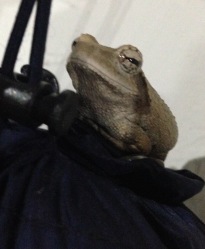 not disturb, life is good here.” The game scout confirmed that it will stay there happily until the rain comes at the end of the year. It will grow fat on insects and then depart to breed.
not disturb, life is good here.” The game scout confirmed that it will stay there happily until the rain comes at the end of the year. It will grow fat on insects and then depart to breed.
Geckos scurry behind the loo when I turn on the light on the occasional cockroach shows its ugly face.
Apart from the scorpions and centipedes all these small creatures are interesting, and sometimes annoying, rather than hazardous. My main insect complaint, however, is ANTS (using this to cover true ants and termites). These creatures are (occasionally) interesting, always annoying and, for things so small, mostly hazardous. Construct a house and watch it systematically deconstructed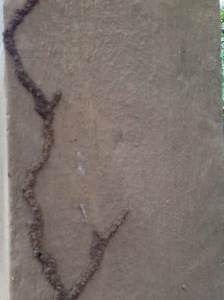
Level an area of ground and within days mounds will appear in it.
Plant some grass and watch as it is chopped up like green beans and hauled through a hole to an underground home.
A dropped crumb will within minutes turn black and move rapidly across the floor. Every cup of tea has a few floaters on the top. These busy bodies take delight in discovering sticky fingerprints or a dead body. They move in columns coming down from the ceiling or along the floor. Their lives are short and daily sweeping brushes out heaps of them, perhaps to be cannibalized by others outside. I have used numerous sticks of ant chalk, acquired in Indonesia, to draw lines on my kitchen wall and watch the ants drop dead onto the draining board. It must be powerful stuff to beat them off so successfully.
But it is the smallest of the smallest that cause the mightiest irritation. They are unseen and unfelt but they create on my body large red lumps that beg to be scratched. Resist this temptation and within a day the itch will go but scratch just once and for many days I will regret it. Their favoured area of attack is the soft parts of the body that are usually kept covered by persons of mature years like myself. They taunt me to expose myself as even the gentle rub of soft clothing makes the itching worse. I have smeared these red welts with tubes of anti-itch cream, in desperation borrowing from the first-aid box, but the most effective remedy seems to be a bottle of strong smelling stuff that I acquired in Indonesia. The Indonesians seem to know how to combat ant aggression.
For an entomologist all these creatures must be an endless source of interest, but for the rest of us they are a constant threat. The good thing is that with the dry months many will disappear but I have a feeling the ants are here to stay.
Extra Time
Three score years and ten is an allotted life span. Any time beyond that is a gift. My father-in-law, known as Papa, called it Extra Time.
How did Papa spend his extra time? He enjoyed it. He read ancient classical texts and accounts of early journeys of exploration in Central Africa. When he could no longer read himself, his wife (Gogo) would read to him, her strong voice bringing to life the hardships and thrills that these adventurous men (they were all men) experienced as they brought a new religion and colonial government deep into the African interior.
It was easy to know what to give Papa so that he would smile and treat me with indulgence. Quality Street chocolates were what he loved. He didn’t share them but kept them close as he sat out his latter days in a huge armchair, upholstered in dusty grey velvet. He ate the chocolates when he was alone, stuffing the shiny bright cellophane wrappings deep down the sides of the chair. There was only one he didn’t like, nor did any one else; the purple wrapped chocolate-coated Brazil nuts were left at the bottom of the box.
I plan to spend the first few months of my Extra Time travelling, going first to Zambia and Zimbabwe, both in Papa’s stamping ground. Zimbabwe (Rhodesia as it was then) is where I grew up from the age of six, and Zambia is where I now have family, including three grandchildren.
Holidays with my own children usually involved finding new far-flung places, and I always thought it was important to feed them during the long travelling hours, not with chocolate but with oddments of interesting information, one of which must have been about dry stone walls. This became the phrase they used, and still do, to show that, although my informative gems were very interesting, they had heard enough and wanted to return to their comics. I will give you some tidbits on ‘dry stone walls’ as I travel, but they will be short.
*****
First Step
When I landed in Lusaka on the first step of my Extra Time travels, it immediately felt good to be back in Africa. The people and the places all seemed familiar and it was easy to slip into a slower pace of living. This I did, enjoying a few days with the family.
Mfuwe, in the Luangwa area of north eastern Zambia is where I would be spending a few weeks so before first light, with a box of Wheatabix, along with chocolate, dried fruit and Milo as luxuries, I set off to meet Boston near his home. The road to Chipata is fairly smooth but the 600 km have only a few small towns on the way and I didn’t want to travel alone. Boston’s confident driving and a comfortable vehicle meant that I was able to enjoy the seven and a half hour trip.
The sun appeared as golden glow, bobbing and dipping before finally rising swiftly as an orb of fire that dazzled us as we headed towards it on the Great East Road. Mist, mingled with smoke and sunlight, lay in blankets over the ground’s surface, from which silhouettes of palm trees stood tall. Once away from the busyness of Lusaka’s outskirts, the minibuses were replaced by children walking to school: the secondary students smart in their brown or green uniforms and long white socks, while in the groups of primary school children, many were without uniform or shoes. By 7.30 the school playgrounds had filled ready for the morning assembly and the flag raising.
Occasionally, we passed small markets, the heaps of tomatoes and sweet potatoes on high stalls. More common were the sacks of malasha or charcoal, ghostly white bases crowned with an equal height of dull black chunks of fuel, tightly laced with bark twine. They stand like pillars along the road, are strapped to the back of bicycles or piled high onto trucks to be taken into the city. The charcoal burners live deep in the forest but the smoky air travels far. Electricity and gas are expensive, and wood not available in the city, so charcoal is popular for cooking.
I asked Boston the name of a twisting small escarpment –’ Kanyungaloka’, he says, and moved his hands in a snake like way. Three hours to the high bridge across the Luangwa River and a long climb up the other side. The river flows through an old rift valley and at this point forms the border with Mozambique. Beyond, Petauke, Sinda, and Katete are the only marked places on the road – places where you may get fuel and find a church or a mosque. The land is flat and sandy with scattered bare grey granite mounds standing out against the cloudless blue sky. Now, the children are returning home from school, swinging their bags and enjoying the winter sunshine.
We arrive in Chipata, where I leave Boston. He will return to Lusaka by bus the next day and I will go to Mfuwe in the South Luangwa Park. I take over the wheel and after going a few metres hastily stop at a zebra crossing to let the school children cross. In Chipata there is a pizza bar and a steak house. We are back in the big city.
Before and during WW11 Papa and Gogo lived in Petauke, Chipata and Lundazi (another place I will travel to whilst here). Papa was a District Officer in the colonial government, and during the war Gogo held a similar position.












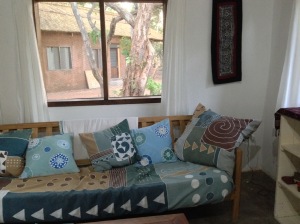
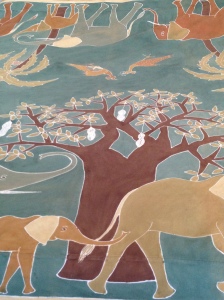
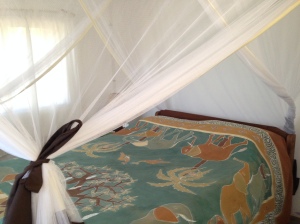


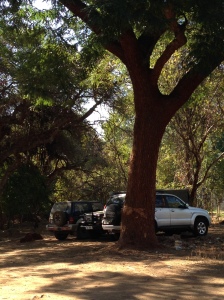





Recent Comments